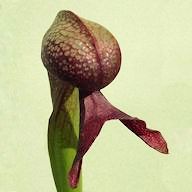Post by fredg on Aug 2, 2020 17:41:45 GMT
A newly acquired Sceletium tortuosum. Quite an interesting plant by all accounts.

The plant has been used by South African pastoralists and hunter-gatherers as a mood-altering substance from prehistoric times.[4] The first known written account of the plant's use was in 1662 by Jan van Riebeeck. The traditionally prepared dried Sceletium was often chewed and the saliva swallowed, but it has also been made into gel caps, teas and tinctures. It has also been used as a snuff and smoked.
Uses
Sceletium tortuosum being sold commercially in Cape Town, South Africa in March 2014. The Sceletium is ground up into a brown powder and typically ingested orally.
S. tortuosum is traditionally used to fight stress and depression, relieve pain and alleviate hunger.
S. tortuosum has been studied to alleviate excessive nocturnal barking in dogs and excessive nocturnal meowing in cats, both diagnosed with dementia.
Uses
Sceletium tortuosum being sold commercially in Cape Town, South Africa in March 2014. The Sceletium is ground up into a brown powder and typically ingested orally.
S. tortuosum is traditionally used to fight stress and depression, relieve pain and alleviate hunger.
S. tortuosum has been studied to alleviate excessive nocturnal barking in dogs and excessive nocturnal meowing in cats, both diagnosed with dementia.
Sceletium tortuosum contains mesembrine and the related alkaloids mesembranol and mesembranone. Mesembrine is known for its effects on the central nervous system. The compounds also act as serotonin-uptake inhibitors, and in specified doses act as anti-depressants, minor tranquilizers and anxiolytics used in the treatment of mild to moderate depression, psychological and psychiatric disorders where anxiety is present, major depressive episodes, alcohol and drug dependence, bulimia nervosa, and obsessive-compulsive disorders (U.S.Patent 6 288 104). Smith et al. (1996) review the data about Sceletium accumulated over 300 years; they record the original folk methods for preparing Kougoed and document its psychoactive properties by reporting on the experiences of several test subjects.










 not here it isn't
not here it isn't